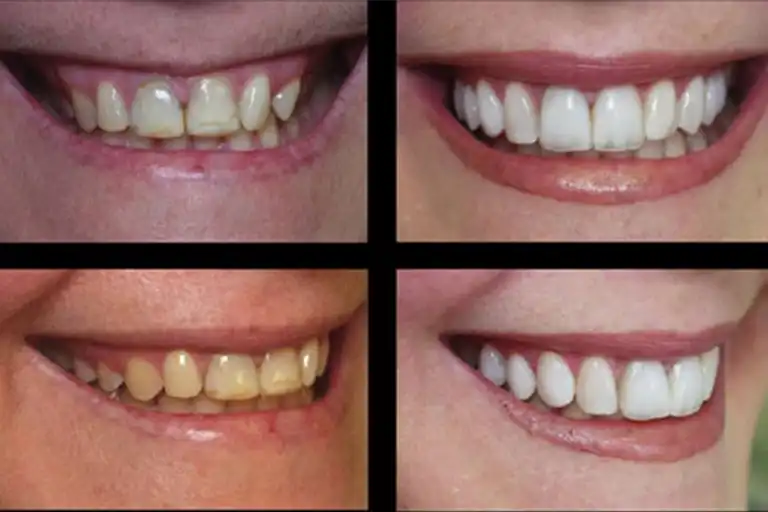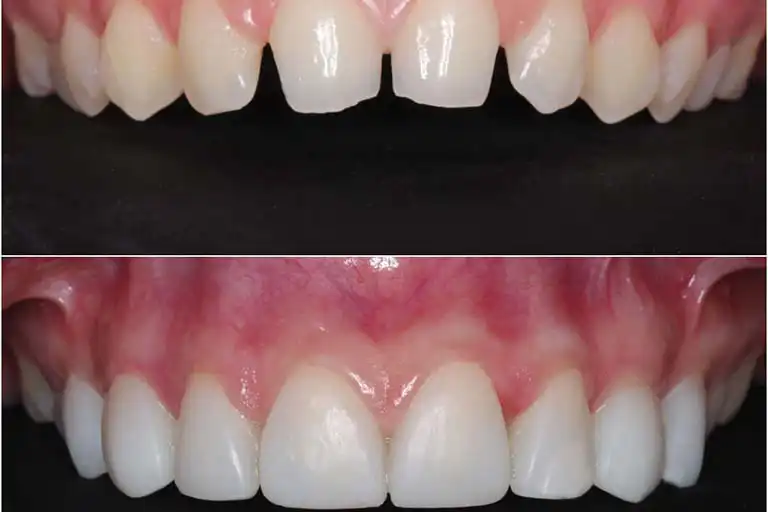Do you think your teeth have changed dramatically from the normal white color? Are you feeling unpleasant about the space between your teeth? How about a fractured and broken tooth? Let’s make it simple, do you have problems with the appearance of your front teeth? Or maybe you feel embarrassed about your smile. Composite veneer restores those dental problems that you are complaining about. Read the article to know more about composite veneers.
What is composite veneer?
A composite veneer is a form of dental bonding treatment which addresses dental imperfections and improves the smile.
You need to know about the veneers and then the composite.
Commonly, veneers are shell-like and tooth-color structures that are bonded to the front surface of teeth. These veneers are called porcelain veneers or dental laminates. But composite veneers are those that the dentist will apply the composite resin material first and then shapes it during the procedure.
This is why porcelain veneers are called indirect–they are prepared in the lab and applied later, and the composite is called the direct method, which requires the dentists’ technique at the time of the procedure for shaping the desired tooth. Don’t bother about the names. These direct and indirect ways are used because of the way these veneers are prepared and placed on the teeth.
Who needs composite veneers?
Veneers are for restorative and cosmetic purposes in the dentistry field. The main goal of veneers is to enhance the smile that is fundamental to how we look.
No more explanation. By having one of the conditions below, you can benefit from composite veneers:
- Noticeable spaces between your teeth
- One or more teeth that stick out from the normal position
- Discolored teeth which can’t get that away even by bleaching
- Feel that your teeth are short in length or small in size
- Wear and tear on teeth
- Fractured or chipped teeth
Composite veneers before and after pictures


How are these composite veneers applied to teeth?
The process of preparation and application is done at the dentist’s office to the front surface of the teeth.
In the preparation stage, teeth can be cleaned, removed from plaque build-ups, and, if necessary, roughened slightly to hold the adhesives and the composite material tight together.
After the preparation work, it is time for acid etching in which a special gel is applied to the surface of the teeth. It makes teeth ready for bonding agent placement.
The bonding material is then placed and activated with the light. The process continues with each layer application of the composite material, and then hardening is followed with the same blue light. Dentists use this UV light (light-curing) in different stages for activating adhesives and achieving a good bond between the material. Next, the other layers are applied in the same manner. These structuring activities are done until the material is firmly bonded to the teeth structure. In the final stage, polishing and final shaping are carried out as the last essential part of the treatment.
How much does composite veneer cost?
Composite veneer is a cheaper option and can cost from $300 to $600 per tooth. Compared to porcelain veneers, which start from $500 or mostly $950 per tooth and reach $2,000 and more, composite is much more affordable.
Generally, composite veneers can last from 5 to 8 years. If you care more and follow oral hygiene practices regularly, you can have them for up to 10 years. Follow common dental care tips to enjoy your composite veneers for more years like using less abrasive and instead gentle toothpaste and toothbrushes. Use fluoride toothpaste. Also, stop grinding your teeth or biting into hard objects. Finally, take good care of composite veneers against any unwanted pressure and force.
Composite veneers have no risks and do not damage your teeth. It is non-invasive, which means you will not undergo any difficult surgical procedure. What the dentist does is just slight drilling of the enamel surface of your teeth to bond the composite materials on them. Dentists may see it unnecessary in some cases. Composite veneers are a repairable and budget-minded choice. Your dentist can easily repair the damaged part, unlike porcelain veneers which can take time and more money to repair. You can try composite veneers for one or multiple teeth and get a natural and attractive smile that lasts for years.
Advantages of composite veneers
These veneers have a lot of benefits. A few comparisons with porcelain veneers may clear the points if you have a feeling of uncertainty about which one to choose.
- It is done in a single appointment (unlike porcelain laminate which might take 2 to 3 sessions)
- It is a great choice for younger people as composite veneers are reversible
- Compared with porcelain veneers, composite veneers are cheaper
- It needs a little preparation work and is less invasive
- Most importantly, there is no need for any desensitizing agents
Disadvantages of composite veneers
Although there are some advantages, there can also be some drawbacks to composite veneers:
- It requires clinical work and you may not be the right candidate
- It may chip if you chew on the hard thing, so not as pressure-resistant as porcelain veneers
- Unfortunately, unlike porcelain veneers, color changes is also possible
How should we take care of composite veneers?
Maintenance of your composite-restored teeth should be part of your daily life.
To take good care of composite veneers, you need to follow these tips:
- Avoid eating excessively foods or fruits that contain a high levels of pigmentation since these veneers change its enamel-like color.
- As an extra tip following what we said above, do not eat those fruits and foods that cause color changes in the tooth for 48 hours from composite veneer placement.
- Avoid Smoking.
- Do not chew on hard things.
- Placing a mouth guard is a must if you have a habit of grinding your teeth at night.
- You need regular visits to the dentist, and good dental hygiene is necessary.
Composite veneers are a quick and great cosmetic solution to improve the bad look of any teeth. It is a favorite cosmetic dental treatment chosen by many people to mask their worn-down and decay-driven teeth. Composite veneers are selected because it saves you a lot of money compared to porcelain and it takes less time (can be done in a single visit). Plus, you don’t have to have much dental work on your teeth as in porcelain, which cuts downs on your spending. And finally, by having composite veneers, you will benefit from a beautiful and attractive look for your teeth.
Ask for advice from your dentist if you have any questions on composite veneer
Your dentist can determine whether you are the right candidate for composite veneers. You will have a beautiful smile with composite veneers. The treatment has been used to restore both function and the appearance of teeth using composite dental bonding, a popular tooth-colored material.
